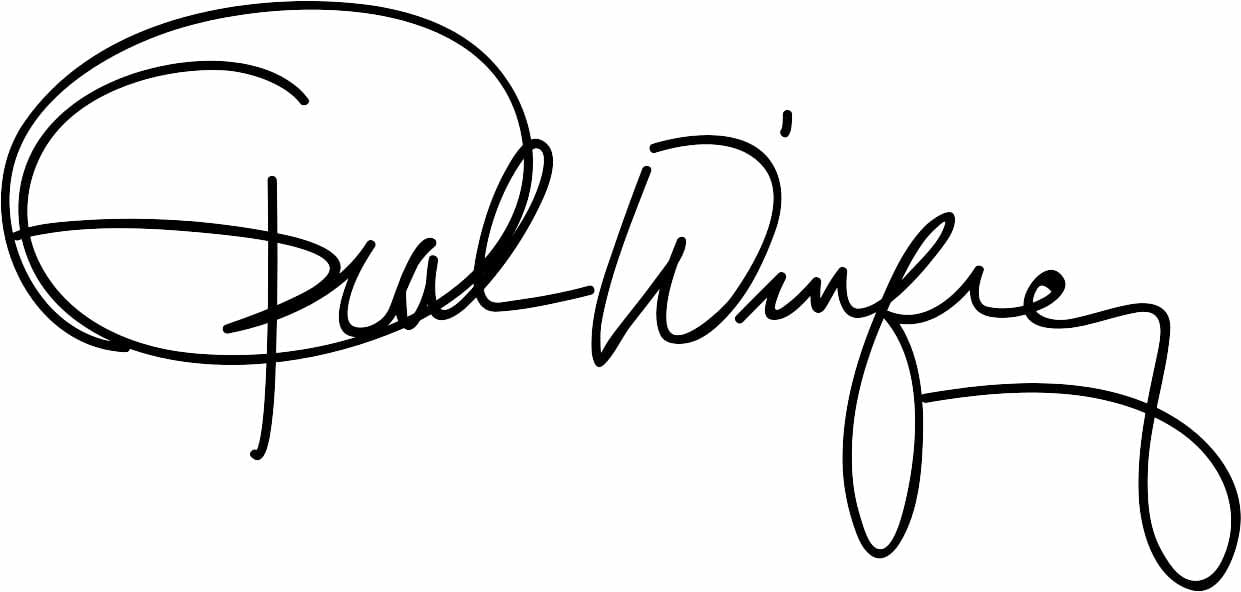The Art and Science of Sharpening Your Kitchen Knives: A Comprehensive Guide
A sharp kitchen knife is not just a pleasure to use; it’s a safer and more efficient tool in any culinary endeavor. A dull blade requires more force, increasing the risk of slipping and causing injury. Furthermore, it tears and crushes food instead of slicing cleanly, leading to bruised ingredients and less-than-ideal textures. Mastering the art of sharpening your own knives is a rewarding skill that will save you time, money, and frustration in the kitchen.
This comprehensive guide will delve into the various methods and techniques for sharpening your kitchen knives, empowering you to maintain razor-sharp edges and elevate your cooking experience.
Why Sharpen Your Own Knives?
Before we dive into the “how,” let’s briefly consider the “why”:
- Safety: As mentioned, a sharp knife requires less pressure, reducing the likelihood of slips and accidents.
- Efficiency: Sharp knives make quick work of chopping, slicing, and dicing, saving you valuable time in the kitchen.
- Preservation of Food Quality: Clean cuts preserve the cell structure of food, resulting in better flavor, texture, and appearance.
- Cost-Effectiveness: Regularly sharpening your own knives eliminates the need for professional services or frequent blade replacements.
- Personal Satisfaction: There’s a certain satisfaction in knowing you can maintain your own tools and achieve a professional edge.
Understanding Knife Anatomy and the Sharpening Process
To effectively sharpen a knife, it’s crucial to understand its basic anatomy and what happens during the sharpening process.
- Blade: The main cutting part of the knife.
- Edge: The very thin part of the blade that comes to a point and does the cutting. This is what we aim to realign and refine during sharpening.
- Bevel: The angled surfaces on either side of the edge that converge to form the cutting point. The angle of the bevel is critical for sharpness and durability.
- Spine: The thick, unsharpened top of the blade.
- Heel: The back part of the blade near the handle.
- Tip: The pointed end of the blade.
The Sharpening Process:
Sharpening essentially involves removing microscopic amounts of metal from the bevels to:
- Realign the Edge: Over time, the delicate edge can bend and become misaligned, leading to dullness. Sharpening helps to straighten this edge.
- Remove Metal to Create a New, Sharp Apex: If the edge is damaged or significantly dull, sharpening removes metal to form a fresh, acute apex (the very tip of the edge).
- Refine the Edge: After creating a new edge, finer abrasives are used to polish it, removing any microscopic burrs or imperfections that can hinder sharpness.
Methods of Sharpening Kitchen Knives
There are several methods for sharpening kitchen knives, each with its own advantages and disadvantages in terms of speed, ease of use, cost, and the level of sharpness achieved.
1. Whetstones (Sharpening Stones):
Whetstones are considered the gold standard for achieving the sharpest possible edge. They come in various grits (coarseness), each serving a specific purpose in the sharpening process.
- Types of Whetstones:
- Oil Stones: Traditional stones that require the use of oil as a lubricant to carry away metal filings and prevent clogging. Common types include Arkansas stones and India stones.
- Water Stones: More popular today, these stones use water as a lubricant. They tend to cut faster than oil stones and produce a very fine edge. Soaking the stone in water before use is essential.
- Diamond Stones: These stones have a surface embedded with industrial diamonds, making them very hard and efficient at removing metal. They can be used dry or with water.
- Grit Ratings: The grit number indicates the size of the abrasive particles on the stone.
- Coarse (e.g., 200-400 grit): Used for repairing damaged edges, removing chips, and establishing a new bevel on very dull knives.
- Medium (e.g., 800-1200 grit): Used for refining the bevel and removing scratches left by the coarse stone. This is where the initial sharpness begins to develop.
- Fine (e.g., 3000-6000 grit): Used for polishing the edge and achieving a very sharp, almost mirror-like finish.
- Ultra-Fine (e.g., 8000+ grit): Used for achieving the ultimate level of sharpness and a highly polished edge, often preferred by professional chefs.
- The Sharpening Process with Whetstones:
- Preparation: Soak water stones in water for the recommended time (usually 5-10 minutes) until air bubbles stop rising. For oil stones, apply a thin layer of honing oil.
- Securing the Stone: Place the whetstone on a stable, non-slip surface. A wet cloth or a stone holder can prevent it from moving.
- Finding the Angle: This is the most crucial step. The ideal bevel angle for most kitchen knives is between 15 and 20 degrees. You can try to visualize this angle or use a bevel guide.
- The Sharpening Stroke: Hold the knife firmly with your fingers on the blade and your thumb underneath for support. Place the blade on the stone at the determined angle, starting near the heel. Apply gentle, consistent pressure as you push the knife forward and across the stone, moving towards the tip. Lift the knife at the end of the stroke.
- Alternating Sides: After several strokes on one side (typically 10-20, depending on the dullness), flip the knife over and repeat the process on the other side. Maintain the same angle and number of strokes.
- Burr Formation: As you sharpen, you should feel a slight burr (a thin, curled-over edge of metal) forming on the opposite side of the blade you are currently sharpening. This indicates that you have reached the edge.
- Removing the Burr: Once a burr has formed along the entire length of the blade, it needs to be removed. Reduce the pressure and alternate strokes on each side, lifting the knife slightly with each pass. You can also try trailing strokes (pulling the knife backward across the stone).
- Moving to Finer Grits: After establishing a sharp edge with the coarser stones, move to progressively finer grits. Repeat the sharpening process with each stone, reducing pressure and the number of strokes as you go.
- Testing for Sharpness: Carefully test the sharpness of the blade on a piece of paper or a soft tomato. A sharp knife should slice cleanly without tearing.
- Cleaning: Clean the whetstone and your knife thoroughly after sharpening.
- Pros of Whetstones:
- Achieves the sharpest possible edge.
- Allows for precise control over the sharpening angle.
- Can repair damaged edges effectively.
- Relatively inexpensive in the long run.
- Cons of Whetstones:
- Steeper learning curve.
- Can be time-consuming.
- Requires practice to maintain a consistent angle.
2. Electric Knife Sharpeners:
Electric knife sharpeners offer a convenient and faster way to sharpen knives. They typically have pre-set angles and multiple stages with different abrasive materials.
- The Sharpening Process with Electric Sharpeners:
- Follow Manufacturer’s Instructions: Each electric sharpener model is different, so it’s crucial to read and understand the user manual.
- Select the Stage: Most electric sharpeners have stages for sharpening, honing, and polishing. Start with the sharpening stage for dull knives.
- Guide the Knife: Carefully insert the knife blade into the designated slot, following the arrows and ensuring the heel of the knife is against the guide.
- Pull the Knife Through: Gently pull the knife through the slot, maintaining light pressure. The sharpener will automatically grind the bevel at the correct angle.
- Repeat Stages: Follow the manufacturer’s instructions for the number of passes and the sequence of stages (sharpening, honing, polishing).
- Pros of Electric Sharpeners:
- Fast and convenient.
- Easy to use, with pre-set angles.
- Good for maintaining a reasonably sharp edge.
- Cons of Electric Sharpeners:
- Can be expensive.
- May remove more metal than necessary if used improperly.
- Some models may not be suitable for all types of knives (e.g., very thin or serrated blades).
- The edge achieved may not be as refined as with whetstones.
3. Honing Steel (Sharpening Steel):
Despite its name, a honing steel does not actually sharpen a knife by removing significant amounts of metal. Instead, it realigns the microscopic teeth on the edge of the blade that have become bent or folded over during use. Think of it like straightening a slightly bent paperclip.
- Types of Honing Steels:
- Steel Rods: The most common type, often made of hardened steel, sometimes with a slightly abrasive surface.
- Ceramic Rods: Harder and more abrasive than steel rods, they can remove a tiny amount of metal while honing.
- Diamond-Coated Rods: The most abrasive type, capable of both honing and some light sharpening.
- The Honing Process:
- Hold the Steel Securely: Hold the honing steel vertically with the tip resting on a stable surface or held firmly in your non-dominant hand, angled slightly away from your body.
- Position the Knife: Hold the knife at the desired angle (typically 15-20 degrees) against the top of the steel, near the heel of the blade.
- The Honing Stroke: With light pressure, draw the knife down the steel in a smooth arc, moving towards the tip of the blade. Maintain the angle throughout the stroke.
- Alternate Sides: Repeat the process on the other side of the blade, using the same number of strokes (usually 5-10 per side).
- Clean the Blade: Wipe the blade clean after honing.
- When to Use a Honing Steel:
- Use a honing steel regularly, ideally before or after each use, to maintain the sharpness of your knife.
- It will not sharpen a truly dull knife but will prolong the sharpness of an already sharp blade.
- Pros of Honing Steels:
- Easy and quick to use.
- Helps to maintain a sharp edge between sharpenings.
- Relatively inexpensive.
- Cons of Honing Steels:
- Does not actually sharpen a dull knife.
- Improper technique can damage the blade.
4. Pull-Through Sharpeners (Manual Sharpeners):
These sharpeners typically have V-shaped slots with carbide or ceramic abrasive elements set at a fixed angle. You simply pull the knife blade through the slots.
- The Sharpening Process with Pull-Through Sharpeners:
- Choose the Slot: Most pull-through sharpeners have different slots for coarse sharpening and fine honing. Start with the coarse slot for dull knives.
- Insert the Knife: Insert the heel of the knife blade into the slot, keeping the blade vertical.
- Pull Through: Apply gentle, even pressure as you pull the knife straight through the slot towards the tip.
- Repeat: Repeat the pulling motion several times, following the manufacturer’s instructions.
- Use the Honing Slot: If your sharpener has a honing slot, use it to refine the edge after sharpening.
- Pros of Pull-Through Sharpeners:
- Very easy to use.
- Relatively inexpensive.
- Faster than whetstones for basic sharpening.
- Cons of Pull-Through Sharpeners:
- Can be aggressive and remove more metal than necessary.
- The fixed angles may not be ideal for all knife types.
- May not produce as sharp or durable an edge as other methods.
- Some models can scratch the sides of the blade.
Sharpening Serrated Knives:
Serrated knives have a scalloped edge designed for sawing through foods with tough skins or crusts. Sharpening them requires a different approach, focusing on the individual teeth.
- Tools for Sharpening Serrated Knives:
- Tapered Round Honing Rod: This is the most common and effective tool. Choose a rod with a diameter that fits comfortably into the serrations.
- Specialized Serrated Knife Sharpeners: Some electric and manual sharpeners have dedicated slots for serrated blades.
- The Sharpening Process for Serrated Knives:
- Identify the Bevel: Most serrated knives are beveled on one side only. Examine the teeth to determine which side is angled.
- Sharpen the Beveled Side: Insert the tapered honing rod into each serration from the back (non-beveled) side. Gently push and twist the rod along the length of the serration, following the angle of the bevel. Repeat this 2-3 times per serration.
- Deburr (Optional): Lightly run the flat (non-beveled) side of the blade across a fine whetstone or honing steel to remove any burr that may have formed.
- Important Considerations for Serrated Knives:
- Only sharpen serrated knives when they are noticeably dull. Over-sharpening can change the shape of the teeth.
- Focus on maintaining the existing bevel angle.
- Some serrated knives with very small or closely spaced teeth may be difficult to sharpen effectively at home.
Tips for Successful Knife Sharpening:
- Maintain a Consistent Angle: This is the most critical factor for achieving a sharp and durable edge. Practice and use guides if needed.
- Use Light Pressure: Let the abrasive do the work. Applying too much pressure can damage the blade and the sharpening tool.
- Sharpen in Stages: Start with a coarser grit to remove material and establish the bevel, then move to finer grits to refine the edge.
- Sharpen Regularly: Don’t wait until your knives are extremely dull. Regular maintenance will make the sharpening process easier and prolong the life of your blades.
- Clean Your Tools and Knives: Keep your sharpening stones and knives clean during the process to prevent metal filings from scratching the blade.
- Test Your Sharpness Carefully: Use the paper test (slicing a sheet of paper cleanly) or the tomato test (slicing a ripe tomato without tearing) to check the sharpness.
- Practice Makes Perfect: Don’t be discouraged if your first attempts aren’t perfect. Sharpening is a skill that improves with practice.
- Consider Professional Sharpening: If you have very expensive knives or are unsure about sharpening them yourself, consider using a professional knife sharpening service.
Safety Precautions:
- Always sharpen knives on a stable surface.
- Keep your fingers away from the edge of the blade.
- Work slowly and deliberately.
- Be mindful of the direction of your strokes.
- Clean your knife carefully after sharpening.
- Store sharp knives safely.
Conclusion:
Sharpening your own kitchen knives is a valuable skill that will enhance your cooking experience and ensure you always have safe and efficient tools at your disposal. While the initial learning curve for some methods, like using whetstones, may seem daunting, the rewards of achieving a razor-sharp edge are well worth the effort. By understanding the principles of sharpening, choosing the right tools for your needs, and practicing diligently, you can master the art and science of knife sharpening and keep your blades performing at their best for years to come. Remember that patience and attention to detail are key to achieving a truly sharp and satisfying edge.


